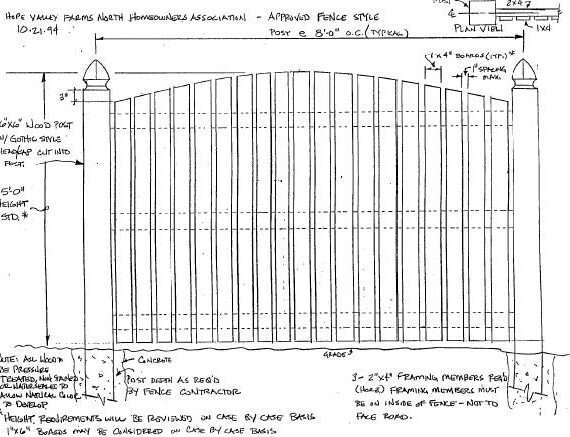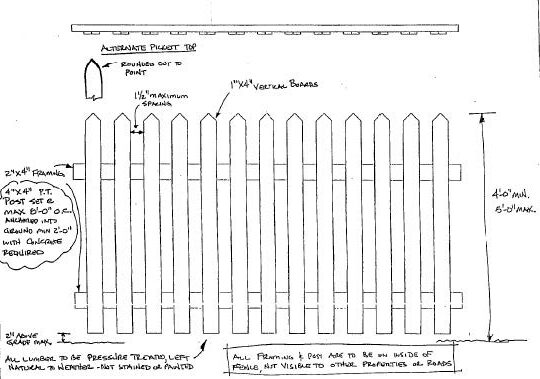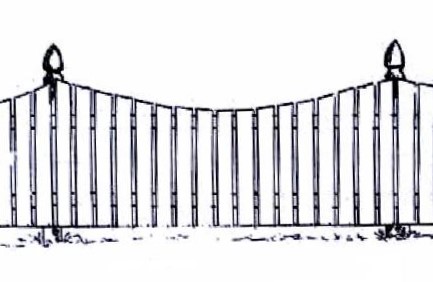Fencing
Rules for Fences
Fencing can detract from the open character of Hope Valley Farms North property and may have both a visual and a physical impact on adjoining property. Homeowners are encouraged not to fence their entire rear yards. Whenever possible, alternatives to hard fencing such as shrubbery, trees and landscaping should be used.
- All fencing requires written architectural approval.
- The typical height for fences is 48 inches from the natural grade to the top rail. No fence over 60 inches will be approved by the Architectural Committee. Allowable fencing heights vary by lot due to line of sight and other issues.
- The fence should be located no closer to the front of the house than a point on the property line setback from the front of the house. Fence setbacks must be consistent with setbacks of existing subdivision fences.
- Natural treated wood is the preferred material for fences. Picket, saddle back, and arch are most appropriate for the architectural style of the community. Whenever possible, the size and type of fences should match adjoining fences. All fences must be maintained. Fences may be stained, or painted white or in coordination with the existing color scheme of the house.
- The use of chain-link fences is restricted to vinyl coated fencing that is used for additional security in conjunction with wood construction and must be placed on the inside of the wood fence. Black, brown and green are acceptable vinyl colors.
- If a single side of a fence is to be finished, the finished or smooth side of the fence must be exposed to all adjoining property and to the street.
- No front yard fencing of any type is allowed.
- In some cases, plantings will be required along the outside of the fence to break-up the fence line. In some cases, the Association may allow the homeowner to install a plant screen on Association property to allow the fence to be placed on the property line. All of the other guidelines concerning fences still apply.



